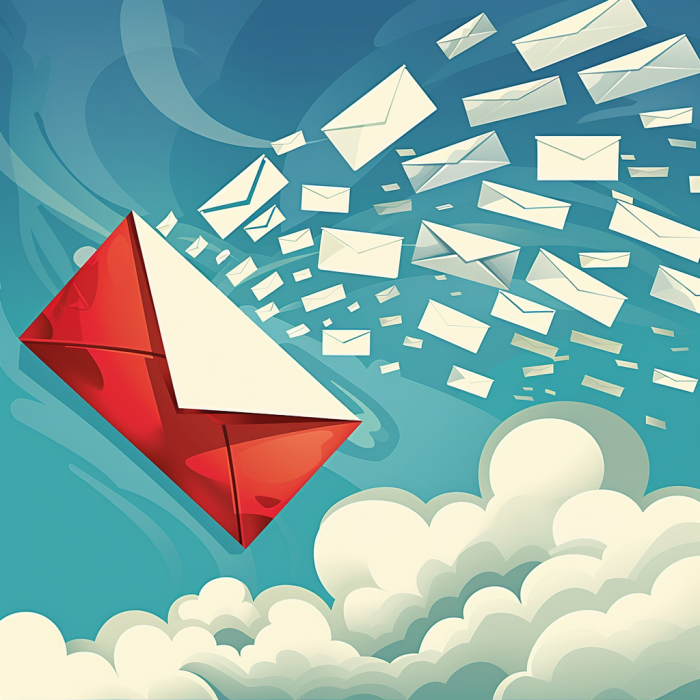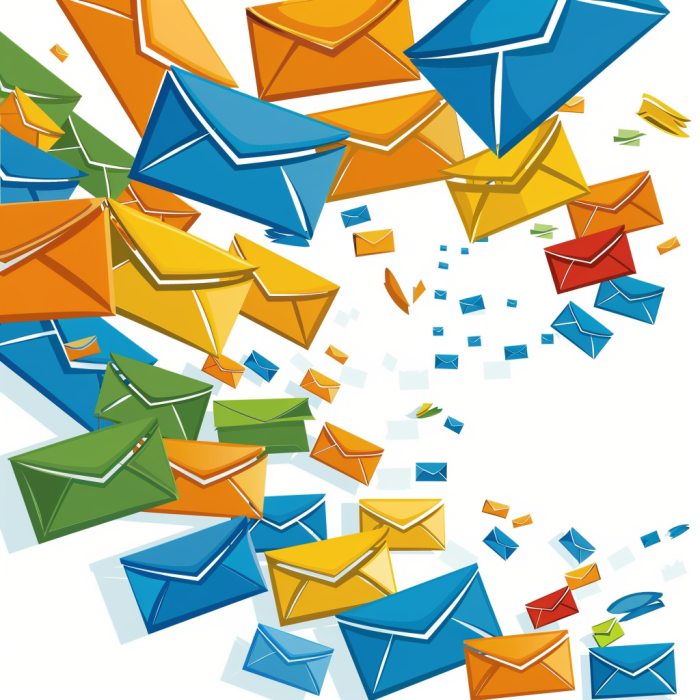A Guide to Win-back Email Campaigns
A Guide to Winback Campaigns
What is a Winback Campaign?
Definition of a win-back campaign (120 words)
A win-back campaign is a targeted marketing strategy designed to re-engage customers who have become inactive or have stopped purchasing from a brand. By using personalized communication, usually through email, these campaigns aim to remind customers of the value the brand offers, enticing them back with special offers or updates on new products and services. The goal is to reignite interest and loyalty, converting former customers back into active patrons. Implementing win-back campaigns can significantly enhance customer retention rates and contribute to a sustainable business model by maximizing the lifetime value of each customer.
Importance of win-back email campaigns (120 words)
Win-back email campaigns are crucial for businesses aiming to maintain a strong relationship with their customer base. These campaigns are not just about regaining lost sales but also about understanding why customers left in the first place. By analyzing the response to win-back efforts, companies can gather insights into customer preferences, dissatisfaction points, and potential improvements in products or services. This feedback loop allows for continual refinement of offerings and marketing strategies, ultimately leading to improved customer satisfaction and loyalty. In an era where acquiring a new customer can cost five times more than retaining an existing one, the importance of win-back email campaigns in ensuring business sustainability and growth cannot be overstated.
Key Elements of a Successful Winback Campaign
Email list segmentation (120 words)
Effective email list segmentation is paramount in win-back campaigns, as it allows marketers to tailor messages specifically to the reasons why different groups of customers might have lapsed. Segmentation can be based on various criteria, such as the duration of inactivity, past purchase behavior, or engagement levels with previous marketing communications. By dividing the inactive customer base into distinct segments, businesses can personalize their outreach more effectively, addressing the unique needs and concerns of each group. This targeted approach increases the relevance of the campaign for the recipients, thereby enhancing the chances of re-engagement.
Effective subject lines for win-back emails (120 words)
The subject line is the first impression of a win-back email and plays a critical role in determining whether the message will be opened. Effective subject lines for win-back campaigns often include a sense of urgency ("Last chance for a special offer!") or highlight a personalized incentive ("We miss you! Here’s a special gift just for you."). Crafting a subject line that resonates with the recipient's interests and previous interactions with the brand can significantly increase open rates. Testing different subject lines and analyzing their performance is also essential to understand what captures the attention of your inactive customers best.
Offering personalized incentives (120 words)
Personalized incentives are a cornerstone of successful win-back campaigns. These could range from exclusive discounts, early access to new products, or loyalty points that might entice a customer to make a purchase. The key is to offer something of genuine value that acknowledges the customer's previous relationship with the brand. Personalization extends beyond just using the customer’s name; it involves curating offers based on the customer’s purchase history, preferences, and behavior. By making customers feel valued and understood, personalized incentives not only encourage a return but also reinforce the emotional connection with the brand, paving the way for long-term loyalty.
Key Takeaway
Win-back campaigns are an essential component of a comprehensive customer retention strategy, aiming to rekindle relationships with inactive customers through personalized communication and incentives. By focusing on understanding the reasons behind customer inactivity and addressing them directly, businesses can turn lost opportunities into loyal customers once again. Implementing targeted strategies such as email list segmentation, crafting compelling subject lines, and offering personalized incentives are crucial steps towards winning back customers and enhancing overall engagement and loyalty.
Fun Fact
Did you know that according to marketing studies, win-back campaigns can have a success rate of up to 45% when personalized and targeted effectively? This highlights the potential of re-engagement strategies to significantly impact a business’s bottom line.
Best Practices for Winback Campaigns
Strategies to re-engage inactive subscribers (120 words)
Re-engaging inactive subscribers requires a blend of precision and creativity. Begin by segmenting your audience based on their level of inactivity or past interaction with your brand. Tailoring your message to their specific behaviors and preferences can significantly increase the likelihood of re-engagement. Employ data analytics to understand why subscribers became inactive and address these issues directly in your messaging. A common strategy includes sending a special offer or discount to reignite their interest. Remember, the key to successful re-engagement lies in personalization and relevance, making your subscribers feel valued and understood.
Create a compelling win-back email copy (120 words)
Crafting compelling win-back email copy involves speaking directly to the reader's needs and emotions. Start with a captivating subject line that piques curiosity or offers value, convincing them to open the email. The body of the email should acknowledge their absence and express genuine interest in their return. Highlight any improvements or new offerings that have occurred since their last interaction. Personal stories or testimonials can also resonate deeply, making the campaign more relatable. Conclude with a clear, enticing call-to-action, such as an exclusive welcome-back offer or an invitation to share feedback. The goal is to create a narrative that makes the customer feel missed and valued, prompting them to re-engage with your brand.
Utilizing email sequences for win-back strategies (120 words)
Email sequences are a powerful tool in win-back strategies, allowing for systematic engagement over time rather than relying on a single touchpoint. A well-designed sequence might start with a gentle reminder of the brand’s value, followed by a more direct appeal highlighting specific benefits or offers. Subsequent emails can address potential objections or barriers to re-engagement, provide social proof, or offer personalized incentives. Timing these emails strategically can keep your brand top-of-mind without overwhelming the subscriber. By carefully curating content for each step of the sequence, you can gradually rebuild interest and trust, guiding the subscriber back to active engagement.
Examples of Successful Winback Campaigns
Case studies of 5 effective win-back email campaigns (120 words)
Several brands have masterfully executed win-back campaigns that rekindled customer interest and boosted engagement. For example, a leading online retailer sent personalized emails highlighting products similar to those previously purchased, coupled with a special discount code. A music streaming service used listening history to create personalized playlists in their win-back emails, enticing former users to revisit. Another brand leveraged humor and a candid tone to acknowledge the subscriber's inactivity, offering a compelling reason to engage. These case studies illustrate the importance of understanding your audience, leveraging data to personalize the approach, and offering clear value to win back customers.
Winning back customers with targeted campaign examples (120 words)
Targeted win-back campaigns have proven effective across various industries. For instance, a fitness app used goal-setting prompts and success stories of other users to motivate inactive members. A beauty brand offered exclusive access to a new product line as an incentive for lapsed customers. Meanwhile, a SaaS company provided a limited-time offer to upgrade at a discounted rate, specifically targeting users who had shown interest in premium features but hadn't converted. These examples underscore the effectiveness of aligning your win-back strategy with the unique interests and behaviors of your target audience, ensuring that your re-engagement efforts resonate and lead to renewed activity.
Key Takeaway
Implementing a successful win-back campaign hinges on personalization, understanding the reasons behind customer inactivity, and crafting messages that directly address these issues. By employing targeted strategies, such as email segmentation, compelling copywriting, and strategic email sequences, businesses can significantly increase their chances of re-engaging lapsed customers. Analyzing successful campaigns can offer valuable insights and inspiration for developing your own effective win-back strategies.
How to Implement a Winback Campaign
Winback campaigns are essential strategies for re-engaging customers who have drifted away. They're not just about reclaiming lost sales; they're about rekindling relationships and reminding customers of the value your brand offers. Below are actionable steps and insights into using win-back email templates effectively.
Steps to send a successful win-back email (120 words)
The foundation of a successful win-back campaign starts with identifying your inactive customers. Use your email marketing tool to segment customers based on their last purchase date or email interaction. Craft your message to acknowledge their absence and express that they're missed. Highlight what's new or improved since their last interaction, and offer them an irresistible incentive to return, such as a discount or exclusive content. Timing is crucial; schedule your email at a time when they're most likely to engage. Finally, monitor the performance of your campaign closely. Adjust your approach based on open rates, click-through rates, and re-engagement levels.
Utilizing win-back email templates for customer winback (120 words)
Win-back email templates offer a quick start to crafting your re-engagement campaign, but customization is key to their success. Personalize the template with the customer's name and past interactions with your brand. Include a compelling subject line that clearly states the email's purpose, like “We miss you! Here’s a special offer to welcome you back.” Your message should be concise, focusing on the value proposition and what’s in it for them. Incorporate clear and enticing calls to action, guiding them on what to do next. Remember, the goal is to make them feel valued and missed, so adding a personal touch or a note from the team can significantly enhance the effectiveness of your win-back campaign.
Key Takeaway
Implementing a win-back campaign requires a strategic blend of identifying the right audience, crafting personalized messages, offering tangible value, and analyzing the campaign's impact. Utilizing email templates can accelerate the process, but personalization and timing are pivotal to reigniting the customer's interest in your brand.
FAQs
What is a win-back campaign?
A win-back campaign targets customers who have become inactive or disengaged, aiming to rekindle their interest in your brand with personalized messages and offers.
How often should you send win-back emails?
The frequency can vary, but starting with an initial email followed by 2-3 follow-ups over a month provides ample opportunity for re-engagement without overwhelming the customer.
What makes a win-back campaign successful?
Personalization, a clear and enticing offer, a warm and engaging tone, and timing are crucial elements that contribute to the success of a win-back campaign.
Can win-back campaigns improve customer loyalty?
Yes, by showing customers you value their business and are willing to offer them special incentives to return, win-back campaigns can strengthen loyalty and encourage long-term engagement.
Inagiffy: Your Ultimate Newsletter Marketing Partner
In today's crowded digital landscape, building genuine, lasting connections with your audience is more crucial than ever.
Enter Inagiffy – a premier newsletter marketing agency that understands the transformative power of well-crafted newsletters. We're not just about sending out emails; we're about curating stories, insights, and value that resonate deeply with your audience.
Our end-to-end solutions ensure that from ideation to delivery, every newsletter reflects your brand's essence and speaks directly to your audience's needs and aspirations. Let Inagiffy empower your brand, forging authentic relationships and driving engagement through the potent medium of newsletters.
Dive into the future of meaningful communication with us and watch your audience grow, engage, and thrive.


Comments
Your comment has been submitted successfully!